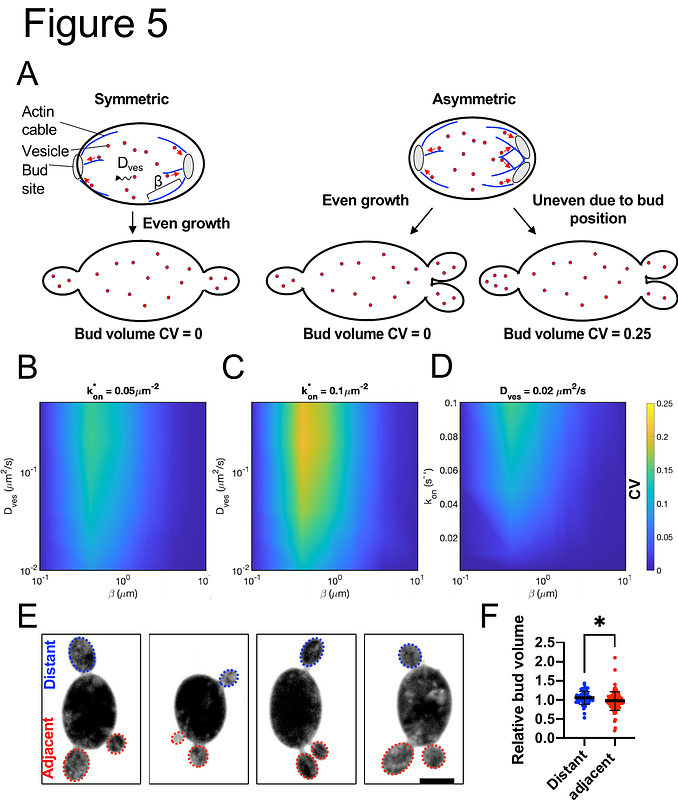Allocation of resources among multiple daughter cells

Allocation of resources among multiple daughter cells
Wirshing, A. C. E.; Alonso Matilla, R.; Yan, M.; Khalid, S.; Colarusso, A. V.; Odde, D. J.; Lew, D. J.
AbstractCell division commonly produces two daughter cells, but there are many exceptions where large cells produce multiple daughters. Multiple fission of some green algae and bacteria, cellularization during embryogenesis of plants and insects, and growth of Ichthyosporeans, Chytrids, and Apicomplexans all provide variations on this theme. In some yeast species, a large multi-nucleate mother cell grows multiple buds (daughters) simultaneously. Here we address how mothers partition growth equally among their buds in the multi-budding yeast Aureobasidium pullulans. Bud growth is directed by actin cable networks that appear to be optimized for even partitioning despite complex cell geometries. Even partitioning does not rely on compensatory mechanisms to adjust bud volumes, but rather stems directly from effective equalization of polarity sites. These results reveal how conserved cell polarity and cytoskeletal networks are adapted to build complex morphologies in fungi.